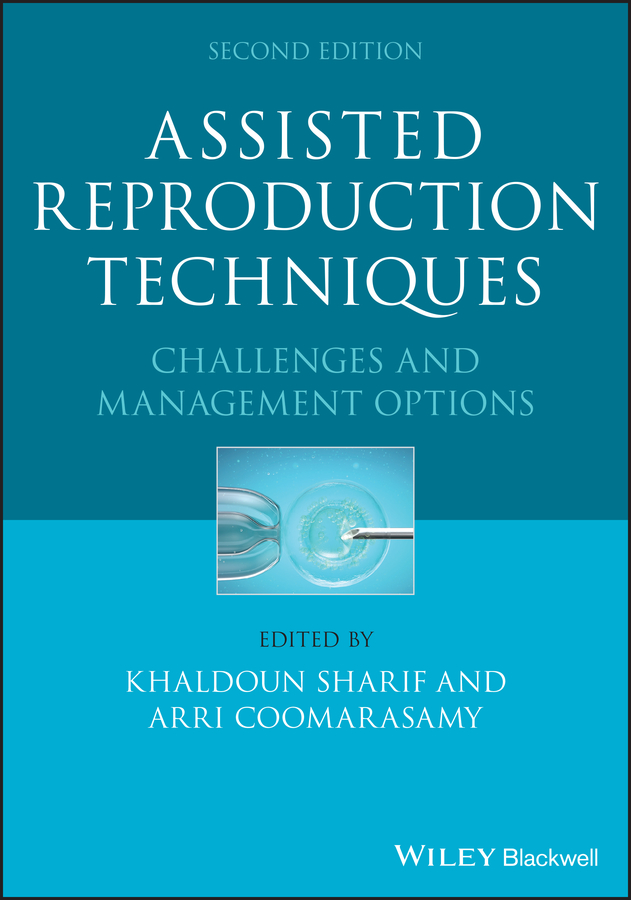<p><b>Assisted reproduction techniques have led to the birth of 8 million babies worldwide</b> </p> <p>Assisted reproduction techniques (ART), in particular in-vitro fertilization and intra-cytoplasmic sperm injection, are the most advanced forms of infertility treatment. They involve numerous counseling, medical, surgical and laboratory-based steps. At each step various problems and complications could be encountered that challenge even the most experienced ART practitioners. Moreover, patients with complex medical disorders may require ART, presenting further challenges. </p> <p><i>Assisted Reproduction Techniques</i> will stimulate resourceful thinking in the ART practitioner when faced with these challenges. It outlines various management options, the reasoning behind them, and the evidence on which they are based to enable the practitioner to choose the most suitable solution for the needs of each patient. </p> <p>Written by 171 internationally renowned experts, <i>Assisted Reproduction Techniques</i> follows the patient’s journey throughout the whole ART process, with chapters on: </p> <ul style=”margin-bottom: 0in; font-size: medium; margin-top: 0in; user-select: text; -webkit-user-drag: none; -webkit-tap-highlight-color: transparent; cursor: text; overflow: visible;” type=”disc”> <li style=”margin: 0in 0in 0in 0.75in; font-size: 11pt; font-family: Calibri, sans-serif; text-align: justify; vertical-align: baseline; user-select: text; -webkit-user-drag: none; -webkit-tap-highlight-color: transparent; cursor: text; overflow: visible;”>Counseling and preparation </li> <li style=”margin: 0in 0in 0in 0.75in; font-size: 11pt; font-family: Calibri, sans-serif; text-align: justify; vertical-align: baseline; user-select: text; -webkit-user-drag: none; -webkit-tap-highlight-color: transparent; cursor: text; overflow: visible;”>Pituitary suppression and ovarian stimulation </li> <li style=”margin: 0in 0in 0in 0.75in; font-size: 11pt; font-family: Calibri, sans-serif; text-align: justify; vertical-align: baseline; user-select: text; -webkit-user-drag: none; -webkit-tap-highlight-color: transparent; cursor: text; overflow: visible;”>Oocyte retrieval </li> <li style=”margin: 0in 0in 0in 0.75in; font-size: 11pt; font-family: Calibri, sans-serif; text-align: justify; vertical-align: baseline; user-select: text; -webkit-user-drag: none; -webkit-tap-highlight-color: transparent; cursor: text; overflow: visible;”>Embryo transfer </li> <li style=”margin: 0in 0in 0in 0.75in; font-size: 11pt; font-family: Calibri, sans-serif; text-align: justify; vertical-align: baseline; user-select: text; -webkit-user-drag: none; -webkit-tap-highlight-color: transparent; cursor: text; overflow: visible;”>The luteal phase </li> <li style=”margin: 0in 0in 0in 0.75in; font-size: 11pt; font-family: Calibri, sans-serif; text-align: justify; vertical-align: baseline; user-select: text; -webkit-user-drag: none; -webkit-tap-highlight-color: transparent; cursor: text; overflow: visible;”>The ART laboratory </li> <li style=”margin: 0in 0in 0in 0.75in; font-size: 11pt; font-family: Calibri, sans-serif; text-align: justify; vertical-align: baseline; user-select: text; -webkit-user-drag: none; -webkit-tap-highlight-color: transparent; cursor: text; overflow: visible;”>The male patient </li> <li style=”margin: 0in 0in 0in 0.75in; font-size: 11pt; font-family: Calibri, sans-serif; text-align: justify; vertical-align: baseline; user-select: text; -webkit-user-drag: none; -webkit-tap-highlight-color: transparent; cursor: text; overflow: visible;”>The ART pregnancy </li> <li style=”margin: 0in 0in 0in 0.75in; font-size: 11pt; font-family: Calibri, sans-serif; text-align: justify; vertical-align: baseline; user-select: text; -webkit-user-drag: none; -webkit-tap-highlight-color: transparent; cursor: text; overflow: visible;”>General and organizational issues </li> </ul> <p>Each of the 116 concise chapters includes clinical cases, background, evidence-based practical management options, preventive measures, key-point summaries of the important details and answers to questions patients ask. </p> <p><i>Assisted Reproduction Techniques</i> first edition has established its place as a “must read” for ART trainees and practitioners alike, and in this second edition all chapters have been updated, with the addition of new ones addressing training issues, organizational and business skills, and social media use in ART. </p>
Clinical and internal medicine, Medical specialties, branches of medicine
Assisted Reproduction Techniques
Original price was: ₹15,640.00.₹11,730.00Current price is: ₹11,730.00.
Challenges and Management Options
This book is currently not in stock. You are pre-ordering this book.

